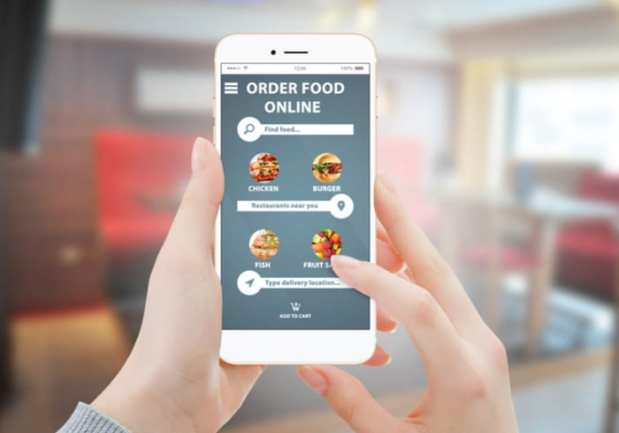QSRs Redouble App Efforts Amid Mobile Order-Ahead Surge

In the digital age of dining technology, consumers have a range of alternatives to ordering at the counter or drive-thru: They can tap into a wide array of quick-service restaurant (QSR) and third-party apps. These solutions let consumers place their orders for that burger and fries or cup of coffee long before they ever step foot in the restaurant.
Mobile represents roughly 60 percent of all digital restaurant orders today, the PYMNTS Mobile-Order Ahead Tracker found. With the growing popularity of mobile ordering, the report notes that “the race to see which apps customers will choose is getting only more competitive.” To keep customers loyal, QSRs are pulling out all the stops, from promotions to the expansion of mobile order and pickup features.
From Domino’s to Burger King, QSRs are reaching customers through mobile apps to provide them with opportunities to place their orders before arriving at a restaurant. These are just some of the ways QSRs are using this channel to make it easier for customers to place orders and interact with their brands while building loyalty:
A little less than half – 44.5 percent – of QSR consumers still prefer to place orders with employees in restaurants. And QSRs are deploying different strategies to bring customers into their stores. Burger King, in one case, is turning to coffee subscriptions amid the breakfast wars, which reportedly could help bring diners into its restaurants to discover other breakfast menu items. Restaurant Brands International CEO Jose Cil told CNBC, “We thought the coffee subscription would be a good way to bring people in, raise some excitement at Burger King.” The outlet reported that McDonald’s and Dunkin’ have been vying to bring diners into their stores during the early morning amid a battle that “has been ramping up over the last few years.”
More than 16 million U.S. customers actively order food and drinks on Grubhub. The food delivery company, however, took a beating in the stock market last month, as a report from KeyBanc Capital Markets said the food delivery service is struggling amid strong competition. “Diner retention, initial diner spend and peak diner spend all appear to be deteriorating,” wrote the analysts. DoorDash is valued at $7.1 billion and is quickly eating up the Grubhub’s market share, with the report noting that the company’s “share gains began accelerating in 2Q18 and show little sign of slowing.” And Uber has been highly focused on its Uber Eats food delivery offering.
Over seven in 10 – or 71 percent – of drivers believe adding food ordering capabilities to their cars would be useful. And QSRs are already working on that functionality: Domino’s, for instance, is bringing in-car ordering to new vehicles in 2019 via a pre-loaded ordering platform called AnyWare. The systems will enable diners to use their vehicles’ touchscreens to place orders. Domino’s Director of Digital Experience Chris Roeser said in a March announcement about the in-car ordering offering, “This new AnyWare platform will make ordering pizza easy, whether you’re in the car waiting for the kids to finish soccer practice or you’re on your way home from work.” The restaurant chain also said logged-in customers can save time by requesting their most recent “Easy Order.”
Thirteen percent of all Starbucks orders came through the company’s mobile ordering tool in 2018. At the same time, the quick-service coffee chain is revamping its rewards program, with the rollout of new redemption options starting in the middle of April. Diners who connect their loyalty membership to a prepaid card or Starbucks Rewards Visa credit card will not have to worry about losing their points. Gold points currently expire six months after the calendar month in which they were earned. Per a March report, the company’s rewards program has 16.3 million active members, who make up approximately 40 percent of all transactions.
Mobile order-ahead customers’ food volume tops that of non-mobile by 10 percent. Mobile order-ahead is also paired with advanced robotics technology: Diners can use a tablet at a kiosk or a mobile app to place an order for one of Blendid’s smoothie blends. After diners customize an order through the company’s app, they arrive at a payments screen and can tap into Google Pay or Apple Pay. (They can also input a credit card directly.) Consumers can then place an order for pickup as soon as possible or set a date and time to retrieve their drinks.
From Blendid to Domino’s, QSRs and dining concepts are harnessing the power of technology to help customers place orders. As mobile ordering is expected to reach $38 billion by 2020, QSRs must meet the challenge of having seamless payments and personalized services to win over customers in the digital dining age.
